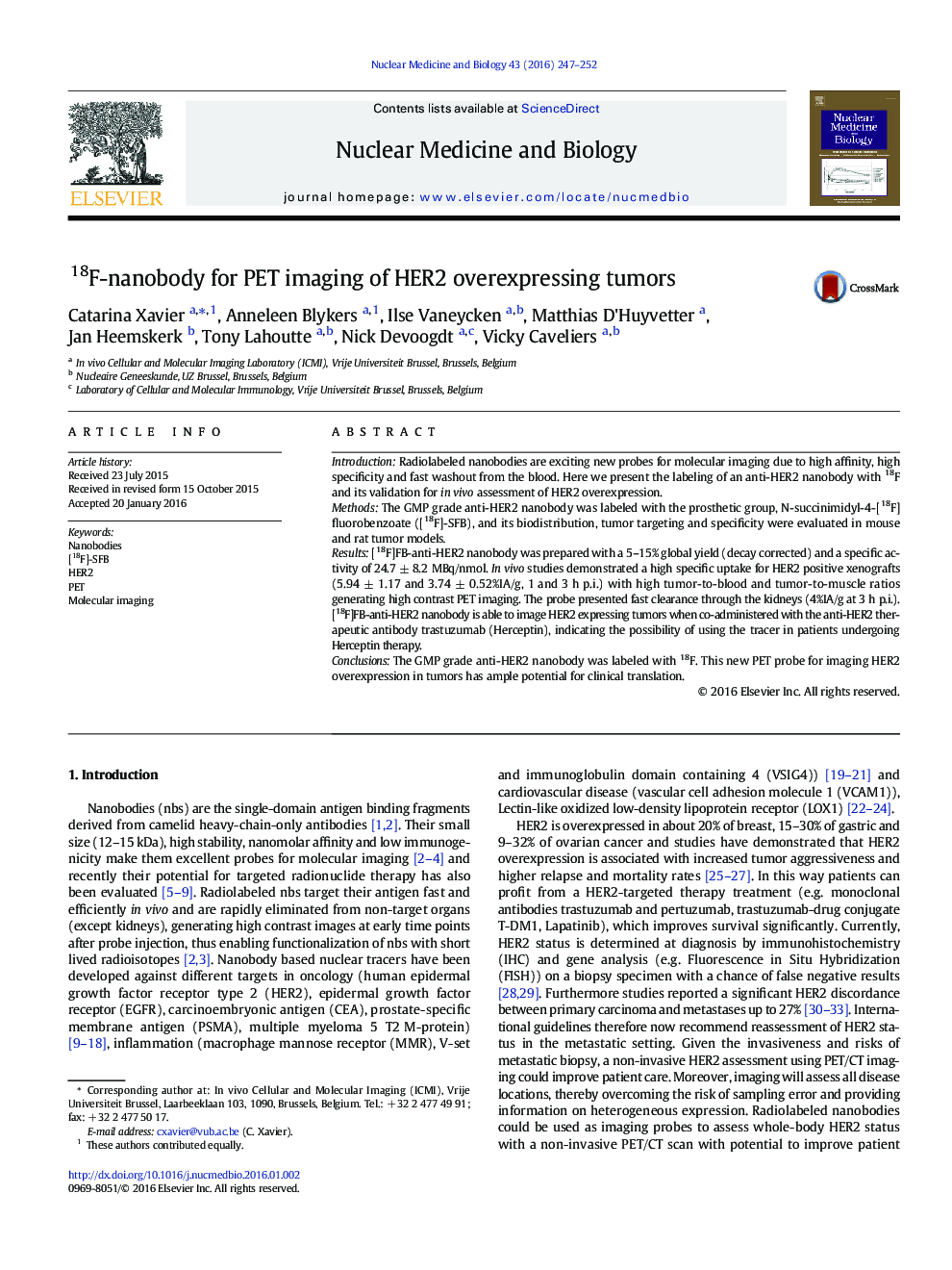| Article ID | Journal | Published Year | Pages | File Type |
|---|---|---|---|---|
| 2153315 | Nuclear Medicine and Biology | 2016 | 6 Pages |
IntroductionRadiolabeled nanobodies are exciting new probes for molecular imaging due to high affinity, high specificity and fast washout from the blood. Here we present the labeling of an anti-HER2 nanobody with 18F and its validation for in vivo assessment of HER2 overexpression.MethodsThe GMP grade anti-HER2 nanobody was labeled with the prosthetic group, N-succinimidyl-4-[18F]fluorobenzoate ([18F]-SFB), and its biodistribution, tumor targeting and specificity were evaluated in mouse and rat tumor models.Results[18F]FB-anti-HER2 nanobody was prepared with a 5–15% global yield (decay corrected) and a specific activity of 24.7 ± 8.2 MBq/nmol. In vivo studies demonstrated a high specific uptake for HER2 positive xenografts (5.94 ± 1.17 and 3.74 ± 0.52%IA/g, 1 and 3 h p.i.) with high tumor-to-blood and tumor-to-muscle ratios generating high contrast PET imaging. The probe presented fast clearance through the kidneys (4%IA/g at 3 h p.i.). [18F]FB-anti-HER2 nanobody is able to image HER2 expressing tumors when co-administered with the anti-HER2 therapeutic antibody trastuzumab (Herceptin), indicating the possibility of using the tracer in patients undergoing Herceptin therapy.ConclusionsThe GMP grade anti-HER2 nanobody was labeled with 18F. This new PET probe for imaging HER2 overexpression in tumors has ample potential for clinical translation.
